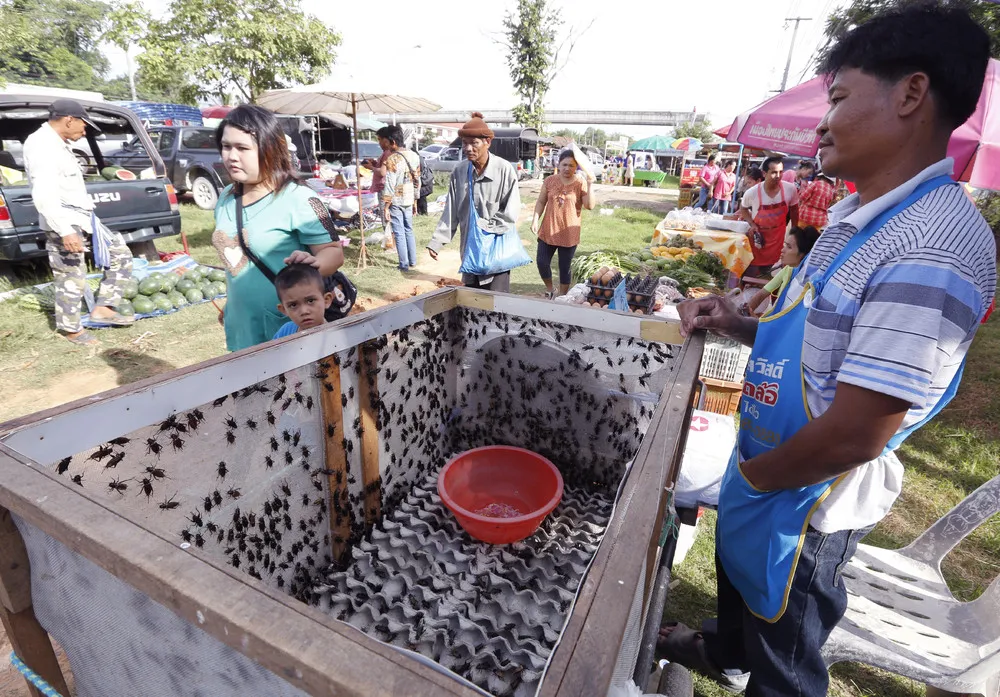|
Thai edible insect farmer Udom Sanart, 44, (R) sells crickets, edible insects at a fresh market in Khonkaen province, northeast of Thailand, 08 July 2013. Insects have long been on the menu in Thailand, but academics and the United Nation's Food and Agriculture Organization (FAO) officials are hoping they will become a more common global source of protein and nutrients to meet the need for growing world food requirements in the future. In both Asia and Europe, edible insects have increasingly been used as ingredients in processed foods, removing the squeamish factor of directly eating the bugs, while in many Asian countries vendors sell the fried whole insects in markets to eager less-squeamish customers. Thailand's pioneering advances in commercial insect farming over the past 15 years has focused on three insect species seeing the annual production of crickets, palm weevils and bamboo caterpillars rise to an average of 7,500 tons of insects a year for domestic and export consumption. Insect farms are located in about sixteen northeast provinces of Thailand. The UN agency estimates that world food production will need to increase 60 per cent from current levels to meet global food requirements by 2050, and has become a keen advocate of insect consumption. Not only does this type of farming have less impact on the environment than many other meat source farming, the insects are also very high in protein, vitamins and minerals necessary for a good diet. (Photo by Narong Sangnak/EPA)
|

